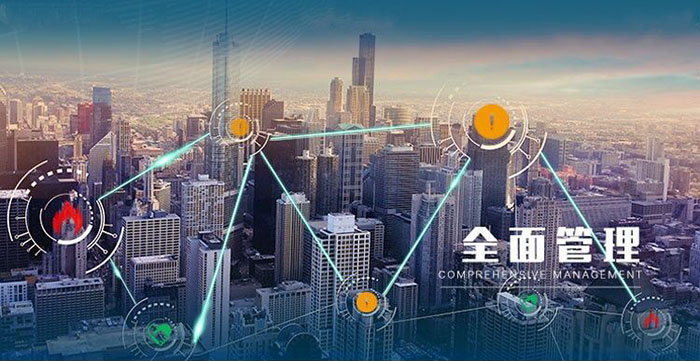With the continuous development of urbanization, the number of high-rise buildings in my country currently ranks among the best in the world. At the same time, fire protection work is also facing unprecedented challenges. How to prevent fires and ensure fire safety has become a key and difficult issue in today’s urban governance. “Smart fire protection” provides a new idea and new path to solve the current fire safety bottleneck problem. The “smart fire protection” system built using big data, Internet of Things and other technologies can effectively integrate the forces of all parties, understand the base of fire hazards, and accelerate the construction of urban public safety and fire prevention and control systems. It has become the key to taking the initiative in fire extinguishing and disaster relief. At the same time, It also builds a powerful safeguard measure to ensure the safety of firefighters!


What is smart fire protection?
The application scope of smart fire protection is extending to nine small places, high-rise buildings, aviation airports, commercial complexes and other fields, and has received attention and attention from many parties.
According to the “Guiding Opinions on Comprehensively Promoting the Construction of “Smart Fire Protection””, smart fire protection is a comprehensive use of RFID (radio frequency identification), wireless sensing, cloud computing, big data and other technologies, relying on modern communication means such as wired, wireless and mobile Internet. Integrate existing data centers, expand the number of networked users of the monitoring system, and improve functions such as system alarm linkage, facility inspection, unit management, and fire supervision.
The construction of smart fire protection is an effective means to improve my country’s current backward fire safety, economic development and people’s demand for safety in life. It is also an effective means to change the existing fire protection work model. It is by no means just a technical solution. It requires comprehensive innovation in the construction, operation and commercialization model of fire safety services. This requires policy support, government leadership, unified planning, and the participation of the entire industry chain, especially the cooperation between enterprises and scientific research. Participate to form an organic and benign mutual promotion mechanism and form your own benign growth.
Internet of Things: The key to improving the “wisdom” of firefighting
The Fire Internet of Things consists of wireless sensing equipment such as smoke detectors, temperature detectors, manual alarm buttons, and combustible gas detectors deployed in a wide area, combined with fire hydrant water consumption, water pressure monitoring, and fire pool liquid level monitoring functions. The basic unit of urban fire protection Internet of Things. At the same time, using wireless communication technologies such as NB-IoT, LoRa , and WiFi as carriers, big data, cloud computing and other technical applications are used to access the location distribution, equipment status, fire monitoring and other data of the basic units of the Internet of Things to the cloud for integrated analysis. Finally, it is presented to residents, property management and fire control departments through the APP mobile client and web page, providing intelligent and information-based means for regional fire prevention and control.
Based on these advantages, public utility management departments such as enterprises, transportation, taxation, and fire protection have begun to adopt the IoT cloud platform to improve service quality and efficiency. At present, smart fire protection is still in its initial stage of development. As Ding Hongjun, deputy director of the National Fire Protection Electronic Product Testing Center, said, “IoT fire protection terminal technology and products come first, and the platform comes second.” Only effective connections and data of terminals can be ensured. Only with authenticity can we lay a solid foundation for realizing wisdom.
The track is crowded and companies are chasing each other
According to incomplete statistics, there are 21 successful cases of smart fire protection construction in 34 provinces and cities across the country. In the process of building smart cities, smart fire protection enterprises can be roughly divided into three types of enterprise forms: equipment providers, solution providers, and service operators. Internet companies such as BAT, IoT companies such as Huawei, China Telecom, China Unicom, China Communication operators such as China Mobile and some emerging technology companies are rushing to join the smart fire protection industry. Cross-industry reshuffles, advances in technology and business models are constantly giving the fire protection industry new acceleration.
In today’s smart firefighting IoT industry, every company has many competitors, but no competitor can compete with the times. Therefore, changes in the firefighting industry are the biggest competitor for every company.
In the basic stage of the smart fire protection Internet of Things, it mainly realizes the connection of things and the collection of data. Internet of Things companies and communication companies have become the protagonists and appear more frequently. As smart firefighting develops towards a more advanced stage, cloud computing, visualization, VR, big data, BIM and other companies will gradually play a more central role.
Who will lead the smart fire protection industry in 10 years? The technology is gradually maturing, the industrial chain is constantly improving, and the market potential is huge. Opportunities for the smart fire protection industry have arrived.